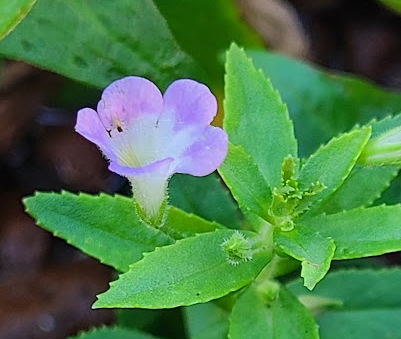I just learned about rice paddy herb on the 808 Green Thumbs Facebook group. This is an outstanding culinary find! Its scientific name is Limnophila aromatica. Popular in Southeast Asia, it is known as “ngò ôm” in Vietnamese, “phak bung” in Thai, and “nước mắm” in Laotian. It’s also known as shiso kusa in Japanese, literally shiso weed.
Websites will tell you it is known for its aromatic leaves and stems, which have a unique flavor profile combining hints of citrus, mint, and coriander. It also tastes mildly like shiso, and a lot like cumin. In a word: ONO.
After learning of its existence, I stopped in Honolulu’s Chinatown to pick some up. The store I bought it at is on Hotel Street, near the intersection of River Street and on the Hotel Street side of Maunakea Marketplace. I thought I took a picture of the store sign, but for some reason I can’t find it on my phone. In any case, the store has many different types of SE Asian herbs such as lemongrass, rau ram and fish mint. The rice paddy herb is at the cash register in plastic bags. Just ask.
I bought a bag, then returned the next week to buy another. It is so tasty! For a while, Dr. B (devout plant exchange volunteer and regular fixture at each event) and I tried to grow cumin before finally admitting that Hawaii’s climate isn’t conducive to cumin. Now, I have a ready source of that flavor profile. It’s easy to grow rice paddy herb you understand one thing: It’s an aquatic plant.
Considering how delicate and perishable this herb is, it was surprisingly inexpensive. Of course, it is Chinatown, not the most convenient location for many. I’ve heard that there’s another Asian market nearby with parking: Island Green Mart near Iwilei Costco. I’ll give that a try the next time. But, back to the subject of growing rice paddy herb.
Grow it under a bag. At least that’s what Viet World Kitchen says works. I’m in agreement, although if you have an aquaponics system, just use the leaves and toss the stems in and they’ll grow. The picture above is what it looked like after about a week. It even bloomed.
According to Wikipedia, rice paddy herb will also grow underwater and some varieties are used in aquariums. In other words, if you know how it grows, it’s easy. If you don’t, it’s hard because it needs constant humidity and moisture.
About the flavor — there’s nothing like it. The conventional wisdom says to chop it up and add it at the very last moment if cooking. I made a paste of it with matchstick ginger and salt and tossed it into a stir-fry. Right now I’m thinking that I could freeze cubes of that paste for later use too.
